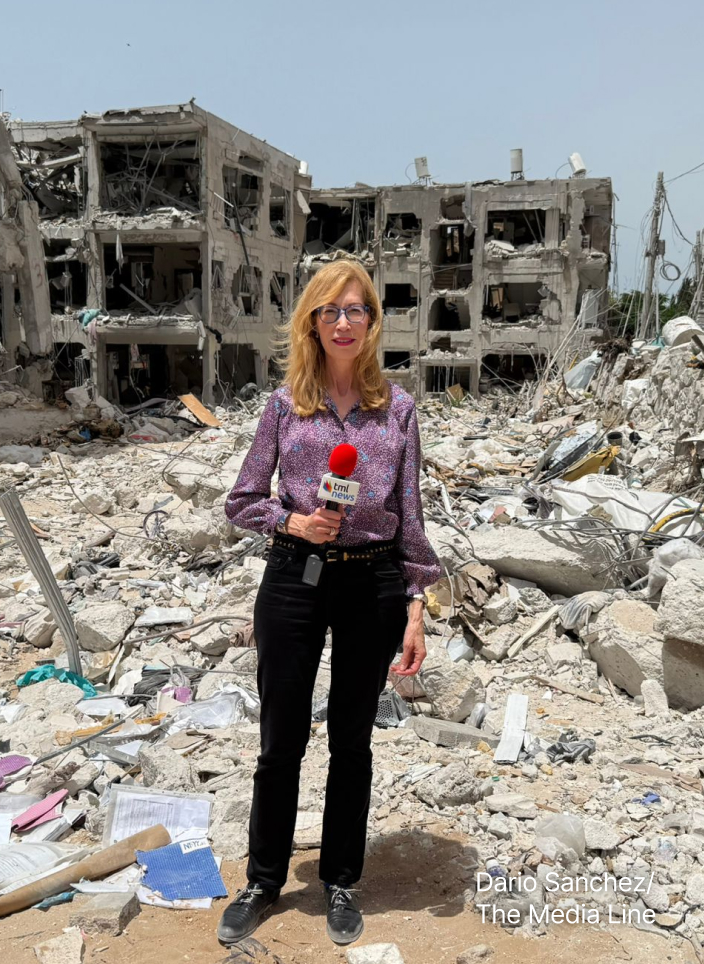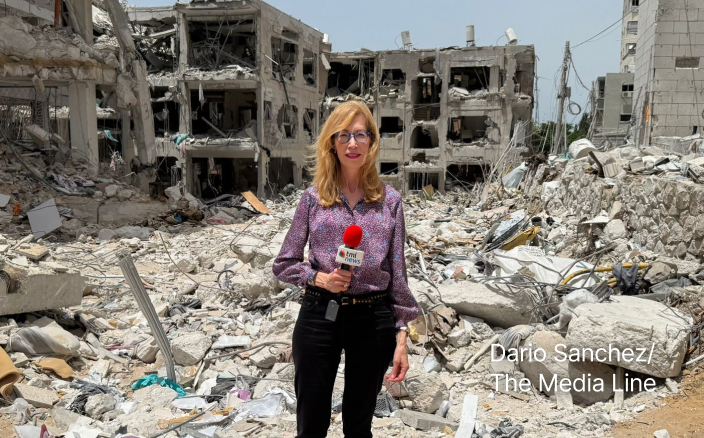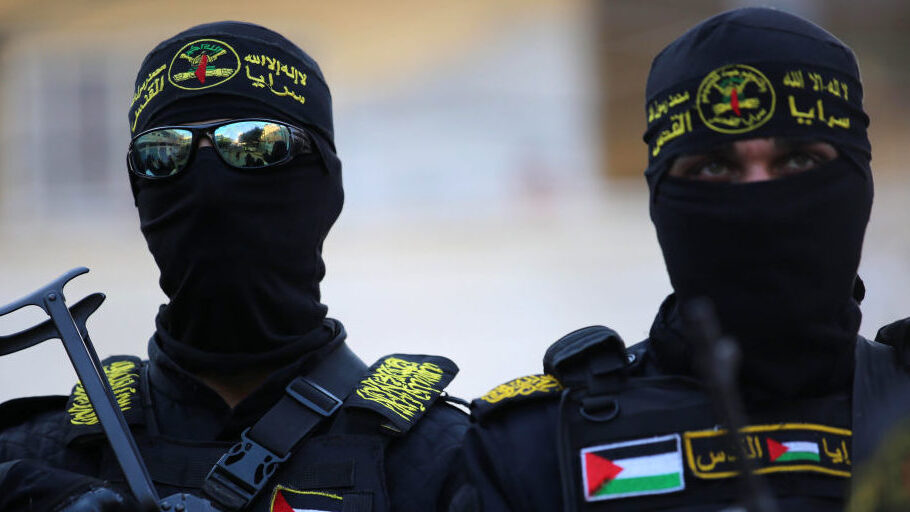Trump’s 20-Point Plan Doesn’t Mention Palestinian Islamic Jihad: Why It Should Matter
Khalil Shikaki, director of the Palestinian Center for Policy and Survey Research, told The Media Line that his survey, to be published on October 28, 2025, shows Islamic Jihad support at roughly 1%–2% in both Gaza and the West Bank
This Saturday, Israel said it carried out a targeted strike in central Gaza against a Palestinian Islamic Jihad (PIJ) operative it accused of planning an imminent attack on Israeli troops, while the group denied the allegation. Despite heavy criticism, US Secretary of State Marco Rubio said the strike did not violate the US-backed cease-fire. In parallel, Israel’s foreign minister said Turkey will not be accepted in any proposed international force for Gaza — highlighting Israel’s insistence on vetting who enters the Strip — while US officials reiterated that no American troops will go into Gaza, with roughly 200 US personnel supporting from outside. Founded in the early 1980s by Fathi Ibrahim Abdulaziz Shaqaqi PIJ rejected Oslo-era politics and advanced armed struggle through its al-Quds Brigades — a lineage and posture well-documented in open sources. In interviews with The Media Line, two specialists — Daniele Garofalo, analyst of Islamist rebels and armed groups, and Erik Skare, senior researcher at the Norwegian Institute of International Affairs — explained how PIJ’s ideology, structure, and battlefield behavior diverge from Hamas, and why that matters in both Gaza and the West Bank.
“There are small but important ideological differences between Hamas and Palestinian Islamic Jihad,” Garofalo told The Media Line. “Hamas has an Islamist ideology linked to the principles of the Muslim Brotherhood (whose ultimate goal is similar to that of PIJ), namely armed resistance, an end to occupation, independence, etc. The PIJ has a more strictly militant and revolutionary ideology; it rejects political compromise and favors ‘people’s war’ and armed action as the only means,” he added.
It’s fair to say that PIJ is a military movement engaging in the political field, while Hamas is a political movement engaging in the military field
Skare distilled the identity split into one line: “So although PIJ has a political wing and a political bureau, it’s fair to say that PIJ is a military movement engaging in the political field, while Hamas is a political movement engaging in the military field,” he told The Media Line. That frame also captures their contrasting social footprint: “PIJ has not bothered much about social services, proselytizing or moral policing to the extent Hamas has — what matters is armed struggle against Israel; everything else comes later. So, in a sense, PIJ aims for liberation for Islamization, while Hamas traditionally has aimed for Islamization for liberation,” he added.
For residents in camp districts from Jabalia to Jenin, the distinction between a political-military party and a military-political movement isn’t theoretical. It shows up in who fixes the power line after a strike, who negotiates the opening of a checkpoint, and who arrives first when shots are fired. Hamas’ governing apparatus is present in those mundane moments; PIJ’s presence is sharper, narrower — felt in the rhythm of raids and funerals, in the quiet knock on doors that turn cousins into cellmates. That asymmetry is exactly why the two groups behave differently under a fragile truce.
As Garofalo noted, Hamas separates its political bureaucracy — foreign offices, social organization, propaganda — from the Izz ad-Din al-Qassam Brigades and governs. “Hamas governs, exercises territorial control, internal security and administration,” he said. Governance forces trade-offs — sequencing fire with partners, absorbing international pressure, and keeping the civil apparatus from buckling.
By contrast, PIJ is “smaller, more centralized in its military command, and sometimes acts as a more clandestine structure less interested in civil politics,” he explained. That leanness removes many brakes in crises: “[PIJ] tends to focus on raids, rockets and military operations without the constraints of civil management; this can lead to more reckless escalations, even if Hamas then pays the political and military cost,” he added.
Skare warned against false precision: “We do not have specific numbers on PIJ’s militants, but some estimates range between 5,000–8,000 compared to the Izz ad-Din al-Qassam Brigades’ 30,000, which gives a sense of differences in size.” What is clearer is the toolset: “PIJ has engaged in the same types of military tactics as its sister movement — mortars, rockets, ambushes, armed clashes, IEDs and sniper operations — although Hamas has carried out more complex ambush operations,” he added.
Give the gift of hope
We practice what we preach:
accurate, fearless journalism. But we can't do it alone.
- On the ground in Gaza, Syria, Israel, Egypt, Pakistan, and more
- Our program trained more than 100 journalists
- Calling out fake news and reporting real facts
- On the ground in Gaza, Syria, Israel, Egypt, Pakistan, and more
- Our program trained more than 100 journalists
- Calling out fake news and reporting real facts
Join us.
Support The Media Line. Save democracy.


[PIJ] is not Shiite or followers of any Khomeinist line. It’s a marriage of convenience.
On Tehran, Skare stressed ideological independence versus material dependence: “[PIJ] is not Shiite or followers of any Khomeinist line. It’s a marriage of convenience … the movement has grown de facto dependent on Iran, which limits its maneuverability should their interests conflict, as one saw in 2015–2016,” he noted. Garofalo saw the same post-2023 trade-off: “PIJ became more powerful and more militarized … ties with the IRGC (Quds Force), via Hezbollah, have increased the PIJ’s capabilities … at the same time, this dependence has reduced part of its strategic autonomy,” he said. Recent US measures against IRGC-QF financial and procurement networks, including crypto and front-company pipelines, illustrate the levers mediators point to when trying to curb PIJ’s tempo.
PIJ has a long history of absorbing leadership losses, from the 1995 assassination of founder Fathi Shaqaqi onward, by pushing decision-making downward and privileging repeatable tactics (rockets, IEDs, sniper fire) over complex, leader-dependent operations. Decapitation weakens coherence and tempo, but it rarely erases capability: logistics nodes re-route, training flows from Hezbollah and the IRGC adapt, and local commanders regain initiative. That’s why single strikes can calm a sector for weeks yet, by themselves, do not remove the escalatory risk when the political environment shifts.
In Gaza, Hamas’s governing role compels sequencing — calibrating fire to avoid institutional collapse or losing its political monopoly. Garofalo said on the matter: “In Gaza, where Hamas is the main governing actor, Hamas must combine military action with administrative responsibilities,” often coordinating operations “to prevent the collapse of the civil apparatus or to preserve its political-military monopoly,” he added. PIJ, lacking that burden, accepts higher operational risk.
In the West Bank, the ecology is local and networked. Skare noted: “The West Bank cells are mainly locally driven and organized, and function partly as neighborhood watches in absence of any actor providing Palestinians in Jenin, Tulkarm and Tubas, etc., with security against Israeli raids.” Recruitment, he added, turns on “pre-existing social ties where recruitment is driven by who you know and from where you know them,” a pattern that has held “for both PIJ and Hamas … since the Second Intifada,” he further added.
Unlike Gaza, the West Bank is mediated by a triangular dynamic: the Palestinian Authority’s (PA) security presence, regular Israeli raids, and PIJ/Hamas clandestine cells. PA coordination — uneven and politically costly — narrows the oxygen for PIJ’s sustained networks, even as short, locally rooted cells keep reappearing. That’s why Jenin or Tulkarm can flare quickly after a single raid or arrest sweep: the cells are social first, ideological second, and state and nonstate pressures don’t remove the pool of recruits so much as keep the cycle intermittent. The result is a pattern of bursts rather than continuous insurgency, with PIJ accepting higher risk precisely because it carries no governance burden.
Garofalo situated those networks inside three drivers: “social/youth frustration, local dynamics (clans, refugee camps, territorial identity), and external/organizational support that enables action and amplifies its scope,” he said.
The current public framing of the 20-point track overwhelmingly references Hamas, yet compliance hinges on PIJ as well. However, PIJ is not explicitly mentioned in President Trump’s 20-point plan.
Compared with Hamas, PIJ is more rigid in exchanges. It seeks leverage and won’t accept deals that look like capitulation; it wants terms and guarantees it can frame as victory
Diplomatically, Skare described PIJ as “a veto player or a junior partner,” and added, “Muhammad al-Hindi … has met regularly with Hamas’ diplomatic team to be updated on developments, provide advice and make clear what the red lines may be … Al-Hindi and Secretary-General Ziyad al-Nakhalah have also engaged with mediators such as Egypt. The fact that any ceasefires have been coordinated with PIJ makes it more difficult for PIJ to break or violate them,” he noted. Garofalo called Cairo an “embedded mediator” with limited margins, hence the emphasis on logistics-and-finance pressure to keep PIJ within guardrails.
In practice, the plan’s durability rests on a three-layer mix: first, material pressure on PIJ’s finance and procurement routes — the only lever that consistently slows its tempo; second, inclusion without governance, which keeps PIJ inside Cairo channels so that violations carry reputational cost across the Palestinian arena; and third, graduated responses by the international force and Israel — localized, time-boxed actions designed to avoid collapsing Gaza’s civil apparatus while still raising the price of breach.
Garofalo’s view is that PIJ’s stance in prisoner-for-hostage bargaining is more rigid than Hamas’: “Compared with Hamas, PIJ is more rigid in exchanges. It seeks leverage and won’t accept deals that look like capitulation; it wants terms and guarantees it can frame as victory,” he said. That helps explain late-stage brinkmanship in Cairo rounds — and why small battlefield incidents can quickly test cease-fire tripwires.
One reason PIJ is so militarily present yet politically faint is that support is tiny. Khalil Shikaki, director of the Palestinian Center for Policy and Survey Research, told The Media Line that his survey, to be published on October 28, 2025, shows Islamic Jihad support at roughly 1%–2% in both Gaza and the West Bank, notably low following the announcement of the ceasefire.
Concerning whether PIJ could pivot to governance in Gaza, Garofalo was blunt: “With regard to a potential government, the PIJ, by statute and doctrine, considers armed resistance to be the only means of liberation; it does not recognize the legitimacy of political processes under occupation. … First of all, a doctrinal reformulation: the PIJ should redefine jihad from ‘total and permanent struggle’ to ‘a means to achieve concrete political objectives,’” he noted. Until then, Gaza and the West Bank will continue to feel the pull of a movement that rejects governance yet shapes escalation from the shadows. As Skare put it, “PIJ has no ambition or capacity to govern both Gaza and the West Bank since it was founded following the principle of ‘jihad for liberation and not for governance,’” he concluded

